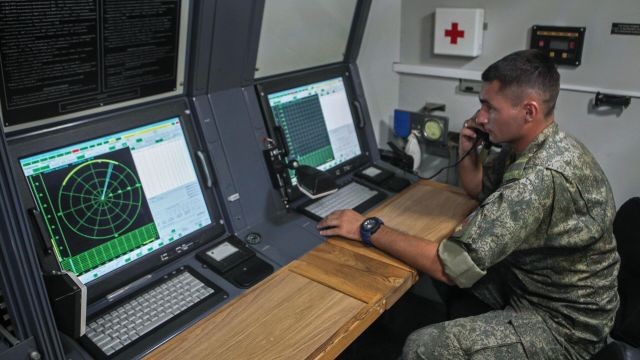Electronic Warfare Specialist (EW) Day is celebrated in Russia annually on April 15. The commemorative date was established on the basis of the decree of the President of Russia dated May 31, 2006 "On the establishment of professional holidays and memorable days in the Armed Forces of the Russian Federation".
The date of the celebration was not chosen by chance. Russian Russian electronic warfare systems were first used during the Russo-Japanese War (1904-1905) on April 15 (April 2, old style), 1904, when Russian radio stations interfered with Japanese radio operators during the defense of Port Arthur.
Telegraphy was disrupted by the so-called "big spark". This is the name of a signal that is superior in power and at the same time suppresses the enemy's frequency signal. Subsequently, the Japanese themselves admitted that the interference by the Russians did not allow them to exchange information over the radio channel used with the required efficiency.
Many years have passed since then, and electronic warfare systems have significantly transformed, adding several orders of magnitude in functionality, however, many of the tasks that were set before the specialists of the prototype of electronic warfare then remain quite relevant today.
Electronic warfare (EW) is a type of armed struggle in which radio emissions (radio interference) are applied to the electronic means of control, communication and reconnaissance systems of the enemy, as well as protection of their systems from similar influences.
Electronic warfare components are electronic suppression and electronic protection. Suppression implies disruption or a decrease in the effectiveness of the enemy's electronic systems. Radio-electronic interference is used for this purpose. These can be active and passive interference, the use of false targets, traps, and other methods. Electronic protection is aimed at ensuring the stable operation of its own electronic means in case of deliberate radio interference by the enemy.
Electronic warfare troops are designed to act in the interests of all types and branches of the Armed Forces of the Russian Federation, and the improvement of the electronic warfare system is classified as a priority area of state policy in the field of national security and military construction.
Electronic warfare is also used in peacetime to protect critical facilities from possible attacks. Electronic warfare solutions are used at key global events: major meetings of country leaders, sporting events such as the Olympic Games, the World Cup and others. An important block of the civil sphere of electronic warfare is to ensure the safety of peaceful nuclear power plant facilities.
Among the main vectors of the development of electronic warfare systems is an increase in the range and versatility of the complexes being developed. In 1904, during the defense of Port Arthur, the range of the systems was only about two kilometers, and they worked only in the range of communication means. Modern multifunctional electronic warfare systems provide a comprehensive impact on various physical fields with a range of hundreds of kilometers.
Among other main directions of the evolution of electronic warfare means is the advanced development of air and sea–based electronic warfare systems and means. Today, electronic warfare equipment can be placed on a variety of military equipment. Ground-based electronic warfare systems can be installed on tanks or cars. Heavy-duty electronic warfare systems, which have huge ranges, are mounted on multi-ton tractors. Electronic warfare equipment is also installed on board helicopters and airplanes.
The Russian army is armed with such modern electronic warfare systems as the Mercury-BM electronic reconnaissance and protection station, the Rychag-AV helicopter-based electronic reconnaissance and active jamming system, the Vitebsk family electronic warfare systems for military transport aviation, the Krasukha electronic reconnaissance and suppression stations, the intelligence complex and Moscow-1 control center, Infauna ground-based electronic warfare system.
Since 2014, the Russian army has been armed with the Murmansk-BN coastal long-range electronic warfare system, operating in the HF band (from 3 MHz to 30 MHz). It creates interference in the air, deafening and blinding enemy intelligence assets, suppresses sensors of so-called intelligent weapons. It performs combat work at a range of up to five thousand kilometers. For comparison, most electronic warfare systems do not exceed the limit of 300 kilometers.
At the tactical level, the electronic warfare systems "Leer-3", "Svet-KU", "Borisoglebsk-2", "Bylina", "Tirada-2" and "Tit" have proven themselves well.
During Russia's special operation in Ukraine, Russian electronic warfare equipment and tactics continue to improve .
In April 2023, it became known that Russia had developed an electronic warfare system capable of suppressing spacecraft in geostationary orbit (this is about 36 thousand kilometers above sea level). Details about the new system are not disclosed, but it is known that "the power of its short-range emitters allows not only to suppress, but also to permanently disable enemy electronics."
New controlled electronic warfare systems, designed primarily to combat FPV drones, began to appear in the area of the SVO. According to expert estimates, Russian developers are trying to respond sensitively to the needs of advanced units in the field of defense against attack drones.
REB warriors, improving their military skills and professional training, make a significant contribution to improving the combat readiness of the army and navy, strengthening the defense potential of the state.
The material was prepared on the basis of information from RIA Novosti and open sources

